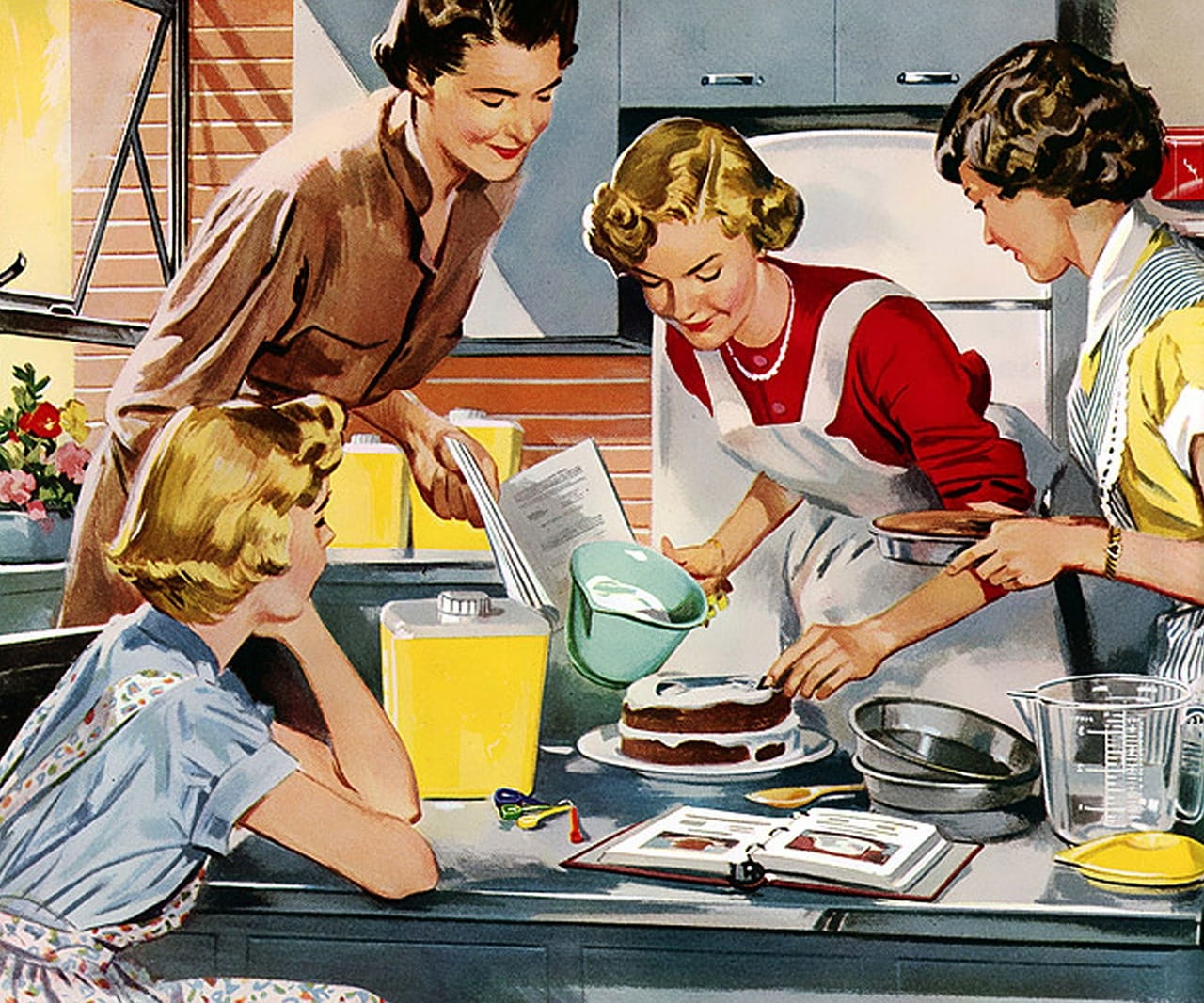
Why Gen Z Is Ditching The Girlboss For The Tradwife
For women who have observed the unhappy zero-sum battle of the sexes, many feel that the modern world, for all its promises, has failed them.
Excerpt:
For women who have observed the unhappy zero-sum battle of the sexes, many feel that the modern world, for all its promises, has failed them.
Hannah Neeleman, a Utah-based cattle farmer and mother of eight, is perhaps the most popular Instagram“tradwife” — a growing category of social media influencers who reject the not-so-traditional 9-to-5 workforce in favor of homeschooling their children, homemaking, or running a family business. Though her content is entirely wholesome, she (and other tradwife accounts) are not without controversy.
In the case of Ballerina Farm, followers recently uncovered that Daniel Neeleman, Hannah’s husband, is the son of the founder and former CEO of JetBlue, whose estimated net worth is $400 million.
Her kitchen stove, prominently featured in many of Hannah’s videos where she bakes sourdough bread, farm-raised beef, and other dishes, costs a minimum of $20,000. For those who laud their simple lifestyle as cattle farmers, many felt blindsided by the wealth enabling their smooth transition to homesteading. Afterall, starting a farm requires many high-cost purchases on the front end from the land, equipment, and animals, forcing many farmers into perpetual debt.
Yet Hannah and other tradwife accounts will easily maintain their prominence going into 2024. For many women, who increasingly report “persistent feelings of sadness and hopelessness” and disillusionment with the “girlboss” lifestyle, these influencers offer an idyllic alternative to urban life. They are illuminating a deeper hunger among women, especially among Generation Z.
A quick search on Google Trends shows that the term “tradwife” gained popularity in 2018 but peaked in 2020 as the pandemic accelerated women’s return to the home. Instead of being confined to religious or ultra-wealthy women, the tradwife movement entered mainstream discussions. It offered women the chance to reclaim the ingredients of happiness — faith, family, community, and meaningful work — back from the career-focused model they grew up with.
Popular online accounts (Links in the article)) tend to show women who don the clothes and lifestyle that they perceive women in a previous era embodied: shirtwaist dresses, aprons, a rejection of formal work outside the home, and a heavy emphasis on homemaking and care for children.
Instead of finding the home stuffy, boring, or trivial, many women found greater purpose and satisfaction than they previously imagined. Initially, the pandemic gave women the ultimate “permission slip” to explore the domestic realm (stay inside to stay alive). Later, popular and aesthetically pleasing tradwife accounts gave women the encouragement they needed to combat the outspoken expectations that all women, even mothers, ought to rejoin the 9-to-5 workforce.
It’s worth considering why Gen Z women, who have the most professional opportunities and fewest barriers to education, work, and politics, would flock in large numbers to tradwife influencers. No doubt the online accounts are more intense in their expressions of femininity, homemaking, or anti-feminist sentiment than the average follower, but then, this is always the case with influencers.
For Gen Z women who have observed the unhappy zero-sum game that is the battle of the sexes, many feel that the modern world, for all its promises, has failed them. They’re looking for an older, and truer, model for how to live a good life. Or, as Carmel Richardson said, “There are too many elders who give bad advice about marriage and family. I am trying to become the matriarch I want to see in the world.”
Similarly, it’s worth asking why this movement provokes many others to mockery or disgust. As one influencer said, “What if their husband leaves them? Then how will they support themselves?” For women who grew up observing the impact of no-fault divorce, family breakdown, the sexual revolution, and the rigid careerism of the 1990s, it seems as though their plan for survival is to depend on no one, especially a man, to provide for them.
The exhaustion and subsequent disenchantment this has produced in Gen Z is enough to spark a counterrevolution.


